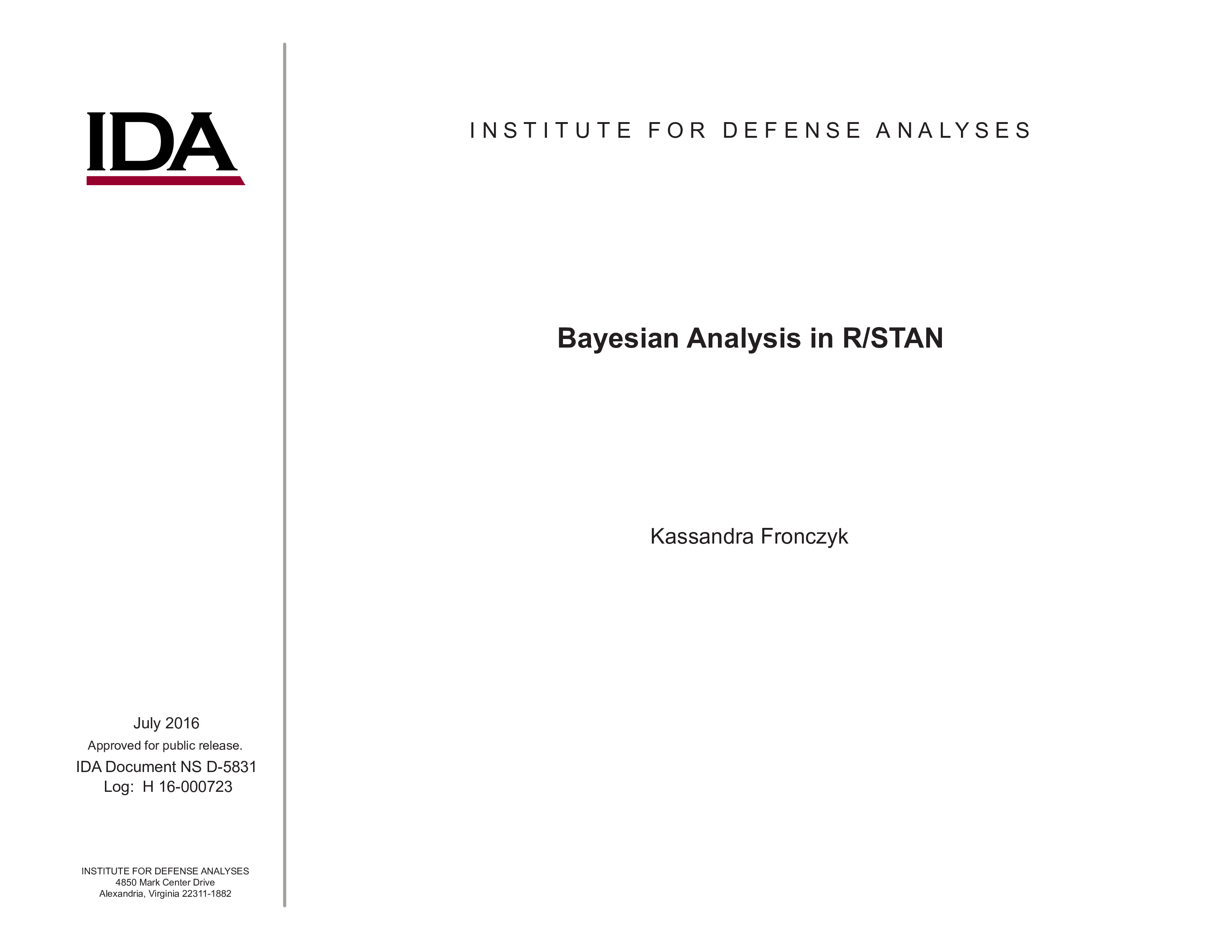In an era of reduced budgets and limited testing, verifying
that requirements have been met in a single test period can be
challenging, particularly using traditional analysis methods that
ignore all available information. The Bayesian paradigm is
tailor made for these situations, allowing for the combination
of multiple sources of data and resulting in more robust
inference and uncertainty quantification. This tutorial is meant
to introduce the basic concepts of Bayesian analysis. Further
illustration of the flexibility and applicability of these methods
is shown with examples from the T&E community, including
implementation details. The course consists of four sections:
-
Fundamentals of Bayesian Analysis: This section
provides the basic concepts common to all Bayesian
analyses, including the specifications of prior
distributions, likelihood functions, and posterior
distributions. A simple example is used for
demonstrative purposes, including a short sensitivity
study.
-
Case study: Littoral Combat Ship (LCS). This section
extends the simple component/subsystem level
system reliability calculation. Here, LCS has a
functional area reliability requirement, but data were
collected on various subsystems of different data
types. Implementation details are given in code
snippets.
-
Case Study: Bio-chemical Detection System (BDS).
This example takes the simple modeling case from
the introduction and introduces factors of interest. A
logistic regression model is fit to determine the
probability of detection across different concentration
levels of various chemical or biological agent/matrix
concentrations. Implementation details are provided,
along with a list of R packages that can aid in the
fitting of these types of models.

